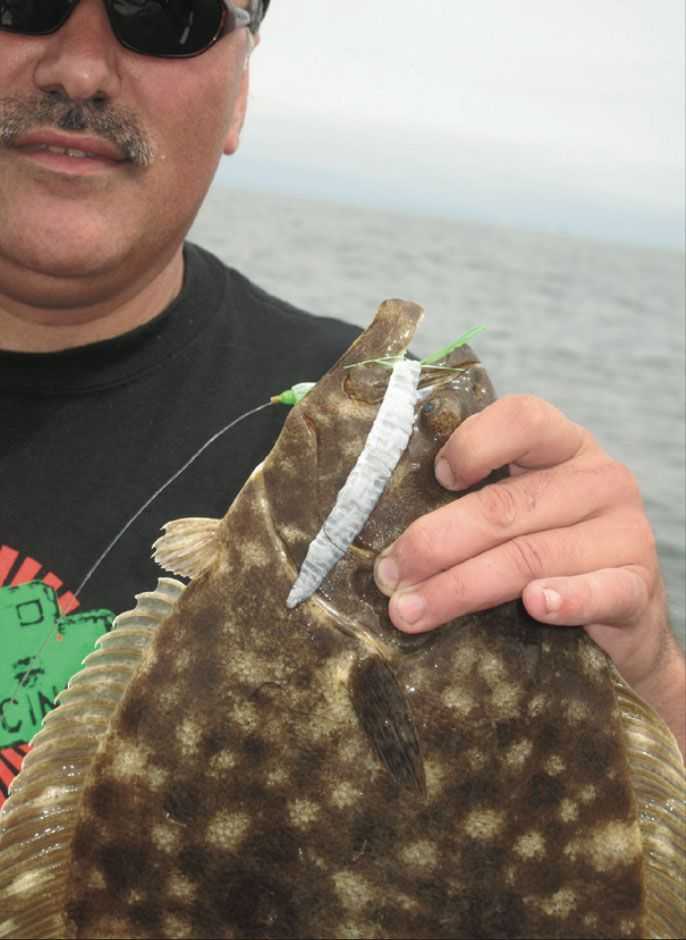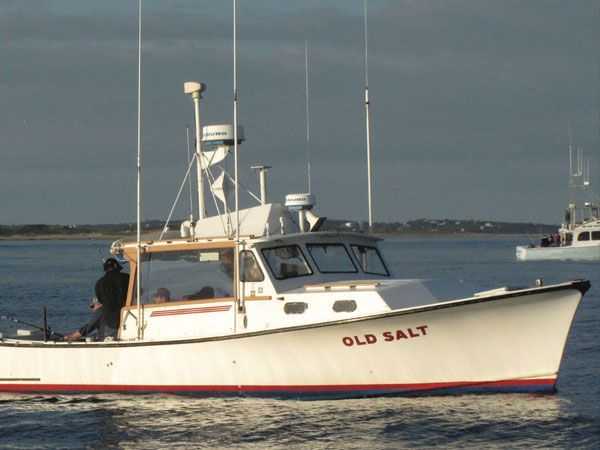As I sit down, many hours’ deliberation over this yet-unwritten column later, it’s not hard to imagine almost every one of my colleagues involved in fisheries management rolling his eyes. Of all the topics in fish-regulation needing explanation—of all the hot-button issues, the management scenarios on the verge of hitting critical mass, this is…well…. This is not one of them.
There are the proposals for striped bass, all sitting on the desks of their respective states’ top environmental/ fish and wildlife administrators awaiting final verdicts. There’s the whole quagmire of black sea bass—a fishery sinking under the uncertainty of its data, despite observations from fishermen, Massachusetts to Florida, that if we get any more sea bass, folks will start running hard aground on them. There’s the recent bluefin tuna stock assessment, which suggests the stock’s doing better than many suspect. There’s fluke—the fact that we all seem to have dodged the bullet, despite widespread quota overages in the Northeast, because overage- payback triggers are calculated on a coastwide basis (we came in under the coastwide TAC, thanks to underages from NJ southward). There’s the whole cod collapse in the Gulf of Maine (and by extension, everywhere else on our side of the North Atlantic). There’s the bleak prognosis on the state of our tautog resource, with drastic cuts to follow, no doubt.

So many other things brewing, and I’m all hung up on a four- word regulatory concept that was all the buzz a decade ago, so much so that it made the top venue in all the fisheries land, the Magnuson- Stevens Act: Ecosystem-based fisheries management.
Actually, this concept was propped up against its statutory Doppelganger, language that further fortified the system’s dependency on best available science. In theory, the two principles ought to go hand in hand—would if there were actual monies allocated for fisheries data collection, would if those tasked with assessing the state of fish stocks were not utterly hamstrung by the scope of their workloads. But that’s a point for later.
Meantime, because the landscape of fisheries policy (not seascape: fisheries is a flatland discipline) is clogged with four- word constellations of bureaucratic doublespeak, it’s important to breathe a little human warmth into this vital idea. Ecosystem-based fisheries management (let’s call it EBFM henceforth) is the idea that, whereas we currently manage our fish one species at a time, each in its own vacuum, we really need to find ways to account for the interconnected nature of all these competing predators (including humans), all the forms of feed fish, the copepods and planktons, and of course the living seabed itself— the habitat.

Most bureaucracies are born fatally flawed, none more so than those tasked with regulation. These hierarchies, born under pressure are, at least in their beginnings, reactive, rather than proactive. That is, we don’t generally see the necessity of them until something has begun spinning out of control and needs reining in. That situation invariably forces us to “start somewhere”—to embrace imperfection, do the best we can to get rolling. From there, the bureaucratic sprawl begins. We realize, for example, that doing things by feel gives too much power to regulators with inherent conflicts of interest, so we require that decisions be based on science. Then we realize that the science is itself slippery, imperfect. If we try to manage based on “trend” (of harvest, or fish abundance) alone, as a means to take strain off flimsy data, then we move too slowly to curtail destructive fishing practices. So we figure out how to quantify efforts and results, then install accountability measures. Before we know it, ten years have got behind us, and we discover that our imperfect attempt at data collection now has a ten-year set of observations and figures gathered by uniform methods. And in scientific circles, you can’t really do anything with any confidence until you have some data sets long enough to even off the inevitable statistical peaks and valleys. Seeing the danger in “apples- to-oranges” comparisons, you avoid rocking the data-collection boat. Just to get a handle on the enormity of counting the ocean’s invisible living contents, we handle our data one species at a time, building statistical models that will crunch these raw numbers into some shape that’s compatible with management demands.
There’s an apt—if tired—analogy to “building the plane during takeoff.” We know better than to re-engineer the wings as we hurtle toward the tree line at runway’s end, vow to fix what we now see is a foolish design until we land. But we never land.
The point is that unless we occasionally pause and consider the big picture, all energy will be put to the endless chore of keeping our rickety bureaucratic machine airborne. So where does the ecosystem-based fishery management come in? Let’s go back to the list of “critical-mass” fisheries scenarios from the head of this column, which represent only a small handful of misfires in progress—and even then, more workload than state and federal regulatory manpower can effectively shoulder.
The problem is this: Whether we like it or not, each of these problem areas connects to all the others. When you’re dealing with fishing effort, sealing the fleet out of one fishery doesn’t eliminate fishing effort, but displaces it. Seal off sea bass, stripers get hit that much harder. Shut off stripers and fluke get hammered. Crash a cod fishery, and get ready for 25 new draggers on the squid grounds, increasing not only squid harvest next year, but fluke bycatch, sea bass.
Hammer that squid hard enough and the future of our fluke gets shaky—not just the bycatch, but the squid as perhaps the dominant food source for our summer flounder. You don’t grow record-high populations of predator species on record-low forage biomass. The models that attempt to account for the enormous complexity of marine ecosystems (and now climate change, too) are highly theoretical at this stage. And they’re also in stock-dynamics parlance, data-hungry—at a time when there isn’t enough research budget to satisfy the appetites of our “single-species” models.
The key concept, here, is that a given fishery is more than just the sum of recent regulatory actions. Fishing effort, pressure on habitat are fluid, but management methods are not. There’s not yet any way to inject a whole-ecosystem sensibility into our regulatory approach—because there’s no statutory requirement to move in that direction, there’s no whole-ecosystem science, no push for it in the immediate future, thus no clear course to bridge that gap. But, when you hear the words “err on the side of conservation” as you have with stripers, know that you are seeing a chance to come down on the side of an ecosystem approach.
What scares me in the short-range is the potential, buried in the minutia of regulations for a whole host of directed fisheries—a cod closure, a sea bass closure, or constrained fluke regulations, for example—to wreak continued havoc on species outside the purview of single-species actions. I worry that tightening fall sea bass regulations will channel still more pressure into an autumn tautog fishery that’s already—with no further help from sea bass backlash— carrying a horrific load of fishing pressure. Likewise, I worry about strain transferred, via a cod closure, to the stripers migrating up into cod country: The fishery that stays open when another of a given area’s staple fish goes off-limits usually gathers most of the spill-over. As we land in trouble with more and more stocks—largely due to regulatory backlash and displaced effort—the need for ecosystem thinking, a more holistic view of our home waters, will become increasingly critical, even if there’s no way to plug that common sense directly into the management regime.
Until there’s a call for it, perhaps the best way to move the ball down the ecosystem field is to exercise whatever caution proposed regulations allow us to choose, based on our sense of which fisheries can handle additional strain, which cannot.









